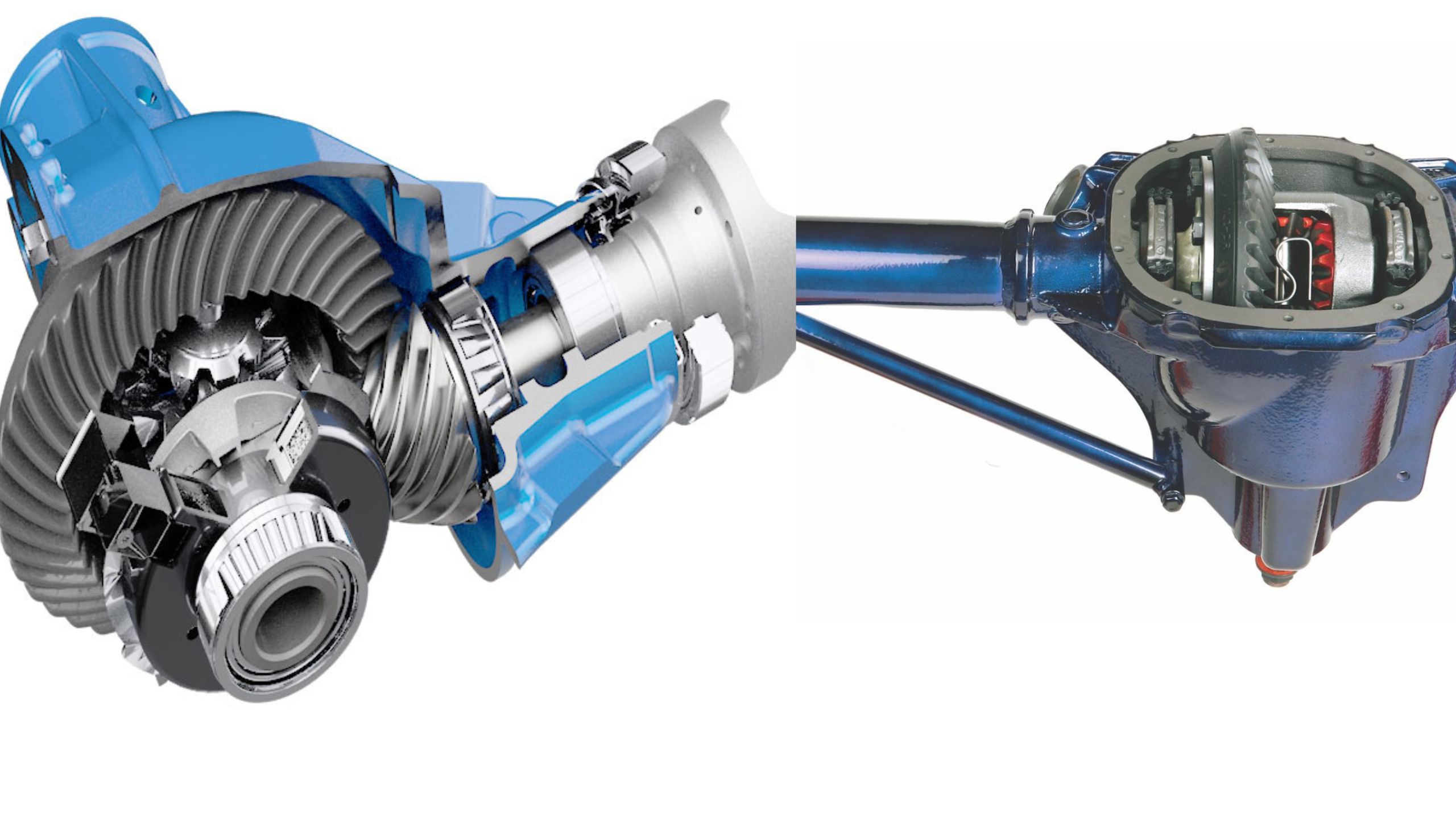A differential is the heart of your vehicle’s drivetrain, quietly working to distribute power from the transmission to your wheels while allowing them to rotate at different speeds during turns.
While often overlooked in regular maintenance discussions, the rear differential can be either incredibly reliable or surprisingly problematic depending on its design, manufacturing quality, and intended application.
In this comprehensive guide, we’ll explore ten different rear differential designs across the automotive world, specifically focusing on their service requirements.
We’ll examine five examples known for their exceptional reliability and minimal maintenance needs differentials that can run for hundreds of thousands of miles with virtually no attention.
We’ll also investigate five notoriously problematic designs that seem to constantly demand fluid changes, repairs, and close monitoring. Understanding these differences can save vehicle owners significant time, money, and frustration.
Whether you’re shopping for a new vehicle, maintaining your current one, or just curious about automotive engineering, knowing which differentials require minimal service and which ones regularly “drink” fluid can inform better maintenance decisions and ownership experiences. Let’s look into the world of differential reliability and maintenance requirements.
Five Rear Differentials That Need Virtually Zero Service
These engineering marvels feature precision-manufactured differentials with exceptional sealing technology and advanced synthetic lubricants specifically formulated for lifetime durability without intervention.
Their intelligent design includes optimized fluid capacities and efficient cooling strategies that maintain ideal operating temperatures, preventing the thermal breakdown that typically necessitates fluid changes.
From heavy towing applications to spirited driving, these exceptional differentials maintain perfect internal lubrication and quiet operation without developing the whines o clunks that signal problems in lesser units.
Owners report reaching 200,000+ miles without ever servicing these maintenance-free differentials—an impressive achievement that eliminates a traditionally expected service item while maintaining like-new performance throughout ownership.
1. Toyota 8-inch Differential
Toyota’s reputation for reliability extends fully to their 8-inch differential, featured prominently in many of their trucks and SUVs including the venerable 4Runner, Tacoma, and older Land Cruiser models.
This differential has achieved legendary status among automotive enthusiasts and mechanics for its remarkable longevity and minimal maintenance requirements.
What makes the Toyota 8-inch differential so exceptionally reliable is its conservative engineering approach. Unlike many competitors who push the boundaries of differential design to achieve marginal performance gains, Toyota engineered this component with significant safety margins.
The ring and pinion gears feature precise machining with optimal tooth profiles designed to distribute load evenly, significantly reducing wear patterns that typically develop in less refined differentials.
The housing itself is constructed from high-quality cast iron that maintains proper tolerances even under extreme temperature fluctuations. This prevents the common problem of housing warping that can lead to premature bearing failure or improper gear mesh in lesser designs.
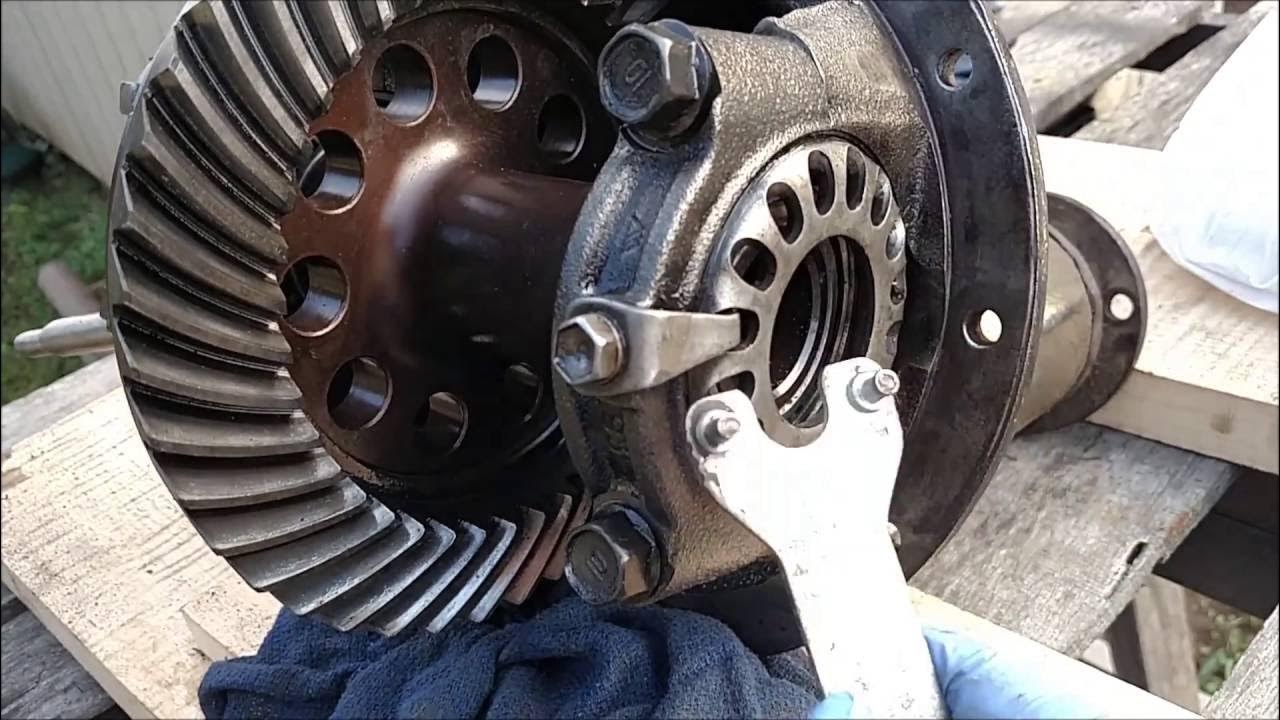
Additionally, Toyota implemented excellent sealing technology that prevents both fluid leakage and external contaminant intrusion, two primary causes of differential failure.
Toyota recommends a fluid change interval of 30,000 miles under normal driving conditions, but countless owners report going 100,000+ miles without a single fluid change while experiencing zero issues.
The differential uses a standard 80W-90 gear oil, but the internal components are so well-engineered that even when maintenance is neglected, catastrophic failure remains exceedingly rare.
Perhaps most impressively, Toyota’s 8-inch differential typically outlasts the vehicle itself. In regions where vehicles rust out before mechanical components fail, these differentials are often salvaged and reused in other vehicles or custom builds because of their renowned durability.
Even in heavy-duty applications like off-roading or towing, where differentials typically experience accelerated wear, the Toyota 8-inch continues to perform reliably with minimal attention.
The combination of conservative load ratings, precision manufacturing, quality materials, and excellent thermal management gives this differential an effective service life that often exceeds 300,000 miles with only the most basic maintenance a true testament to Toyota’s engineering philosophy of prioritizing longevity over cutting-edge performance specs.
2. Dana 44 Differential
The Dana 44 rear differential stands as perhaps the most respected and widely utilized heavy-duty differential in automotive history. First introduced in the 1940s, this differential has powered everything from military vehicles and work trucks to iconic off-roaders like the Jeep Wrangler, Ford Bronco, and numerous full-size trucks across multiple manufacturers.
The Dana 44’s exceptional durability stems from its overbuilt design philosophy. The differential features 8.5-inch ring gear diameter combined with massive 1.625-inch diameter 30-spline axle shafts (in most applications), creating a powertrain component capable of handling torque loads far beyond what most vehicle manufacturers require.
This substantial overrating means that under normal driving conditions, the differential operates well under its stress limits, contributing significantly to its extended service life.
Manufacturing quality sets the Dana 44 apart from competitors. The precision-cut hypoid gears are made from high-grade steel alloys and undergo extensive heat treatment processes to ensure optimal hardness.
The carrier bearings are generously sized and rated for loads exceeding typical usage patterns. More impressively, the differential housing features thick walls with strategically placed reinforcements that resist flexing under load a common cause of premature wear in lesser differentials.

From a maintenance perspective, the Dana 44 is remarkably forgiving. While the manufacturer typically recommends fluid changes every 30,000-50,000 miles, there are countless documented cases of these differentials performing flawlessly with 100,000+ miles on the original fill.
The large fluid capacity of approximately 2.5 quarts provides excellent thermal stability, reducing heat-related breakdown of lubricants. Additionally, the differential’s excellent venting system prevents pressure buildup that can force fluid past seals.
Perhaps most impressive is the Dana 44’s serviceability. Unlike many modern differentials with proprietary designs requiring specialized tools, the Dana 44 can be serviced with basic mechanical tools.
The availability of parts remains exceptional despite its long production history, with everything from bearings to complete rebuild kits readily available at reasonable prices.
This serviceability, combined with inherent durability, means that when maintenance is finally required often after hundreds of thousands of miles, repairs are straightforward and economical rather than requiring complete replacement.
The Dana 44’s reputation is such that it’s often sought after specifically by vehicle buyers who prioritize longevity. Its proven track record across decades of service in the harshest conditions possible from military applications to rock crawling establishes it as the gold standard for differential reliability and minimal maintenance requirements.
3. Ford 8.8-inch Differential
The Ford 8.8-inch differential has earned its place as one of the most dependable rear differentials ever mass-produced, serving as the backbone of countless Ford vehicles since its introduction in the 1980s.
Found in vehicles ranging from the iconic Mustang to the Explorer SUV and F-150 pickups, this differential combines impressive strength with remarkable longevity and minimal maintenance requirements.
What distinguishes the Ford 8.8 differential is its perfect balance between weight, strength, and durability. With an 8.8-inch ring gear diameter, it strikes an ideal compromise between the lighter-duty 7.5-inch and heavier-duty 9-inch Ford differentials.
This design provides ample strength for most applications without the excessive weight penalty of larger units. The differential uses 31-spline axles in most applications, offering excellent torque capacity that significantly exceeds the needs of stock vehicle applications, creating substantial engineering headroom that contributes to longevity.
The internal components showcase Ford’s commitment to durability. The ring and pinion gears utilize precision machining and specific metallurgy that resists wear even under sustained high loads.
The carrier bearings are generously sized and properly preloaded from the factory, preventing the common issue of bearing failure that plagues many competitor differentials.
Perhaps most importantly, the 8.8’s robust aluminum or iron housing (depending on application) maintains proper gear alignment throughout its service life, preventing the accelerated wear that occurs when housing flexing allows gears to move out of their optimal mesh pattern.
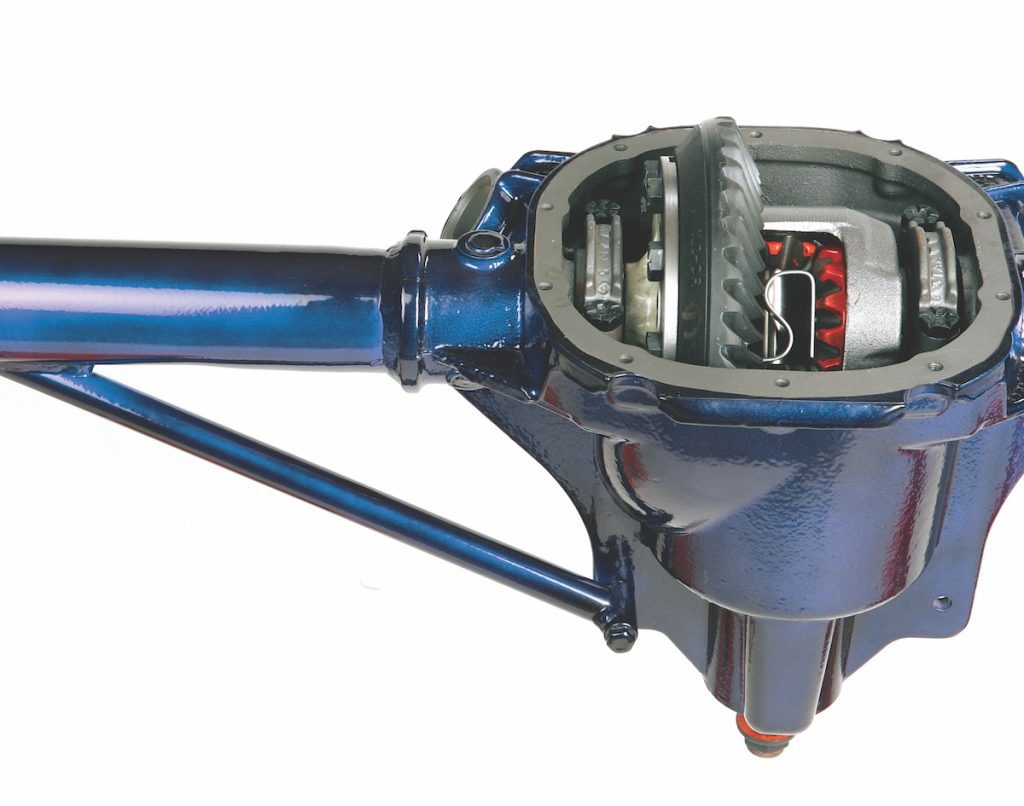
Maintenance requirements for the Ford 8.8 are remarkably minimal. While Ford officially recommends fluid changes at 100,000-mile intervals for normal driving conditions (half that for severe service), countless examples exist of these differentials functioning perfectly well beyond 200,000 miles on their original fluid.
The differential’s excellent cooling design with strategic finning on the housing helps dissipate heat effectively, preventing oil breakdown that would otherwise necessitate more frequent fluid changes.
The 8.8’s sealing system deserves special mention. Its well-designed gaskets and seals consistently prevent both fluid leakage and contaminant intrusion two common differential killers.
The quality of these seals means that even vehicles regularly exposed to water crossings, mud, and debris maintain their differential integrity without fluid contamination. The aftermarket support for the Ford 8.8 is exceptional, with rebuild components readily available at reasonable prices.
However, this extensive parts availability is somewhat ironic given how infrequently these differentials require service. Its popularity among performance enthusiasts and off-roaders speaks volumes when people who intentionally abuse their vehicles still choose a particular differential for its reliability, you know it’s exceptionally well-engineered.
The Ford 8.8-inch differential truly represents one of the automotive world’s most impressively overbuilt yet maintenance-free components.
4. GM 10-bolt Corporate Differential (8.5/8.6-inch)
General Motors’ 10-bolt corporate differential with the 8.5/8.6-inch ring gear (commonly referred to simply as the “GM 8.5”) represents one of the most widely deployed and dependable rear differentials in automotive history.
Found across GM’s lineup from the 1970s through today’s vehicles including Camaros, Firebirds, full-size sedans, and light trucks this differential has proven itself through decades of reliable service with minimal maintenance requirements.
The 8.5/8.6-inch 10-bolt earns its reputation for reliability through intelligent engineering that prioritizes durability over boundary-pushing performance.
Unlike its smaller 7.5-inch corporate cousin (which gained a negative reputation), the 8.5-inch variant features substantially beefier components. The differential utilizes a large ring gear that distributes loads across more tooth surface area, significantly reducing wear patterns even after hundreds of thousands of miles.
The pinion shaft diameter is properly sized relative to the anticipated torque loads, preventing the twisting and eventual failure that plagues underbuilt differentials.
What truly sets the GM 8.5 differential apart is its excellent thermal management characteristics. The housing incorporates substantial mass that acts as a heat sink, while the large fluid capacity (approximately 2.75 quarts) provides excellent thermal inertia.
This prevents the rapid temperature spikes that break down differential fluid and damage seals in lesser designs. Even in demanding applications like police vehicles which routinely subject drivetrain components to extreme duty cycles these differentials consistently deliver 200,000+ miles of trouble-free operation.
The sealing system on the GM 8.5 deserves particular recognition. The pinion seal and axle seals utilize high-quality materials that resist hardening and cracking over time.
This excellent sealing means these differentials rarely experience fluid leakage or contamination, two primary causes of premature differential failure.
Owners frequently report that even at odometer readings exceeding 250,000 miles, these differentials remain dry underneath with no signs of seepage.
General Motors officially recommends fluid changes at 100,000-mile intervals under normal driving conditions, but the differential’s design is remarkably forgiving of maintenance neglect.
Countless examples exist of these differentials performing flawlessly despite having never received a fluid change throughout their service lives. The differential’s ability to maintain proper internal clearances despite thermal cycling and aging is a testament to its excellent engineering and manufacturing quality.
Perhaps the most impressive aspect of the GM 8.5/8.6-inch differential is its consistent performance across varied applications. Whether installed in performance-oriented vehicles like the Camaro, everyday sedans like the Caprice, or workhorse trucks like the Silverado, these differentials deliver the same exemplary reliability with minimal attention required.
This universal dependability across diverse vehicle platforms and driving conditions firmly establishes the GM 8.5/8.6-inch 10-bolt as one of the automotive industry’s most maintenance-free rear differentials.
Also Read: 5 Kia Models That Surprise With Longevity And 5 That Fail Early
5. Nissan R180/R200 Differential
The Nissan R180 and its larger sibling, the R200 differential, represent some of the most robust yet maintenance-free rear differentials ever produced, earning legendary status among automotive enthusiasts and mechanics worldwide.
These differentials have powered numerous Nissan/Datsun vehicles, including the iconic Z-cars, Skylines, Patrols, and various truck models, consistently delivering exceptional reliability with minimal service requirements.
What distinguishes the R180/R200 differentials is Nissan’s commitment to overengineering critical components. The differentials feature thick, robust ring gears (180mm and 200mm, respectively) matched with precisely machined pinion gears that maintain optimal tooth contact patterns throughout hundreds of thousands of miles of operation.
The carrier bearings are generously sized relative to typical loads, creating substantial engineering margins that contribute significantly to their extended service life.
This overbuilding philosophy is perhaps best demonstrated by the fact that even R180 differentials from the 1970s remain fully functional in vehicles still on the road today, often with minimal maintenance throughout their decades of service.
Material quality plays a crucial role in the R180/R200’s exceptional durability. Nissan utilized high-grade alloy steels with precise heat treatment protocols that create optimal hardness profiles throughout the components.
This material selection prevents the premature wear, pitting, and eventual failure that plague many competitor differentials. The housing itself typically cast iron features thick walls that resist flexing under load, maintaining proper gear alignment even under extreme conditions or after decades of use.
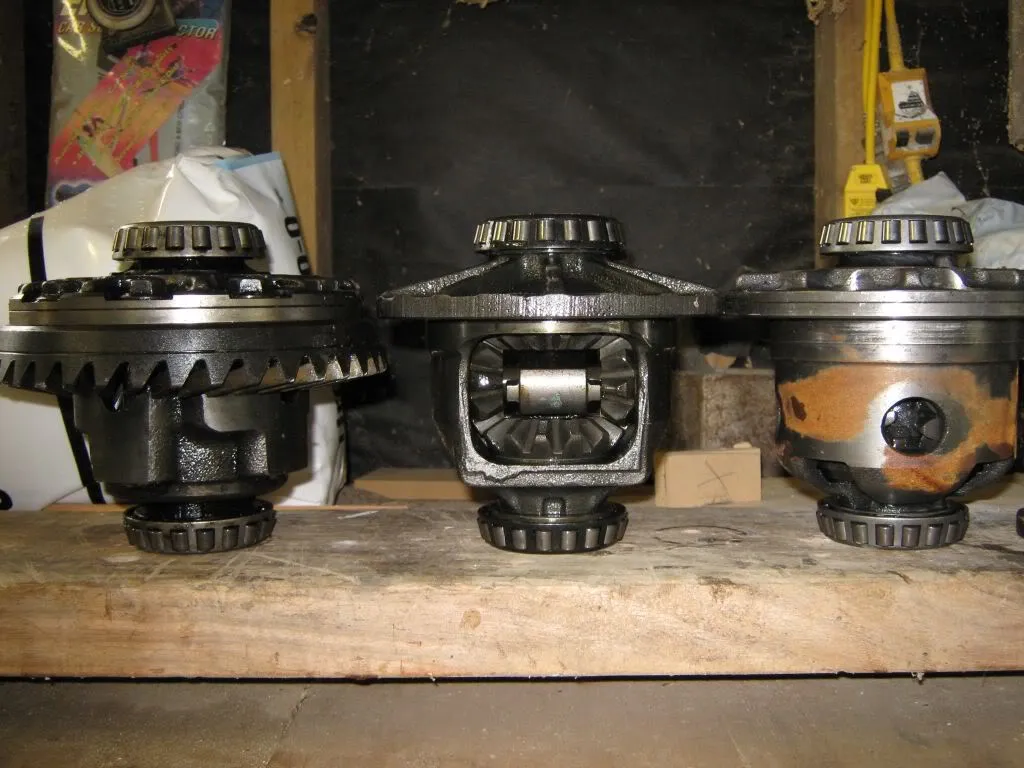
From a maintenance perspective, these differentials are remarkably forgiving. While Nissan officially recommends fluid changes every 30,000-60,000 miles (depending on model year and application), countless documented cases exist of these differentials performing flawlessly well beyond 150,000 miles without a single fluid change.
The differential’s excellent thermal management aided by substantial housing mass and generous fluid capacity prevents the heat-related breakdown of lubricants that would otherwise necessitate more frequent service.
The sealing system of the R180/R200 differentials deserves special recognition. The pinion seal and axle seals utilize high-quality materials that resist hardening and deterioration over time.
This excellent sealing means these differentials rarely experience fluid leakage or contamination, two primary causes of premature differential failure. Even vehicles regularly subjected to water crossings or dusty conditions typically maintain differential integrity without fluid contamination.
What’s perhaps most impressive about the R180/R200 differentials is their continued performance even in modified vehicles. While many differentials quickly fail when subjected to increased power or aggressive driving, Nissan’s overbuilt design provides substantial headroom for performance modifications.
This durability under increased stress further demonstrates the exceptional engineering and manufacturing quality that makes these differentials true standouts in terms of reliability and minimal maintenance requirements.
Five Rear Differentials That Consume Fluid Rapidly
These problematic units develop seepage issues within the first 30,000 miles, often beginning with minor weeping around pinion seals before progressing to concerning puddles that require frequent top-offs.
Their inadequate seal designs and questionable manufacturing tolerances create perfect conditions for consistent fluid loss, particularly when subjected to the thermal cycling of normal driving conditions.
Owners report the distinctive smell of gear oil on hot driveways and the anxiety of regularly checking differential fluid levels a maintenance item most modern vehicles have eliminated through better engineering.
What should be a sealed-for-life component instead becomes a continuous maintenance concern, with many frustrated owners facing expensive seal replacement procedures or even complete rebuilds well before their vehicles reach middle age.
1. BMW M Differential (M Performance Electronic LSD)
The BMW M Differential, specifically the electronically controlled limited-slip differential (LSD) found in high-performance M models, represents a fascinating contradiction in automotive engineering brilliant performance capability paired with notorious maintenance demands.
Found in vehicles like the M3, M4, M5, and M8, this sophisticated differential delivers exceptional handling characteristics but requires vigilant attention to fluid conditions.
At the heart of the BMW M Differential’s fluid consumption issues lies its complex design architecture. Unlike traditional mechanical LSDs, the BMW system utilizes an electronically controlled multi-plate clutch system to dynamically vary locking percentage based on driving conditions.
This design incorporates numerous friction plates operating in an oil bath, creating substantial heat during operation particularly during performance driving.
The extreme thermal loads generated by these friction plates accelerate fluid breakdown at rates far exceeding conventional differentials. The differential’s electronic actuation system compounds the maintenance challenges.
The sophisticated electronic control module and servo motors that adjust clutch pressure reside within the differential housing itself, exposing sensitive electronic components to the thermal stresses of differential operation.
To protect these electronics, BMW utilizes specialized synthetic fluids with specific additives and viscosity characteristics. However, these carefully formulated fluids degrade rapidly under the extreme conditions generated during spirited driving or track use.
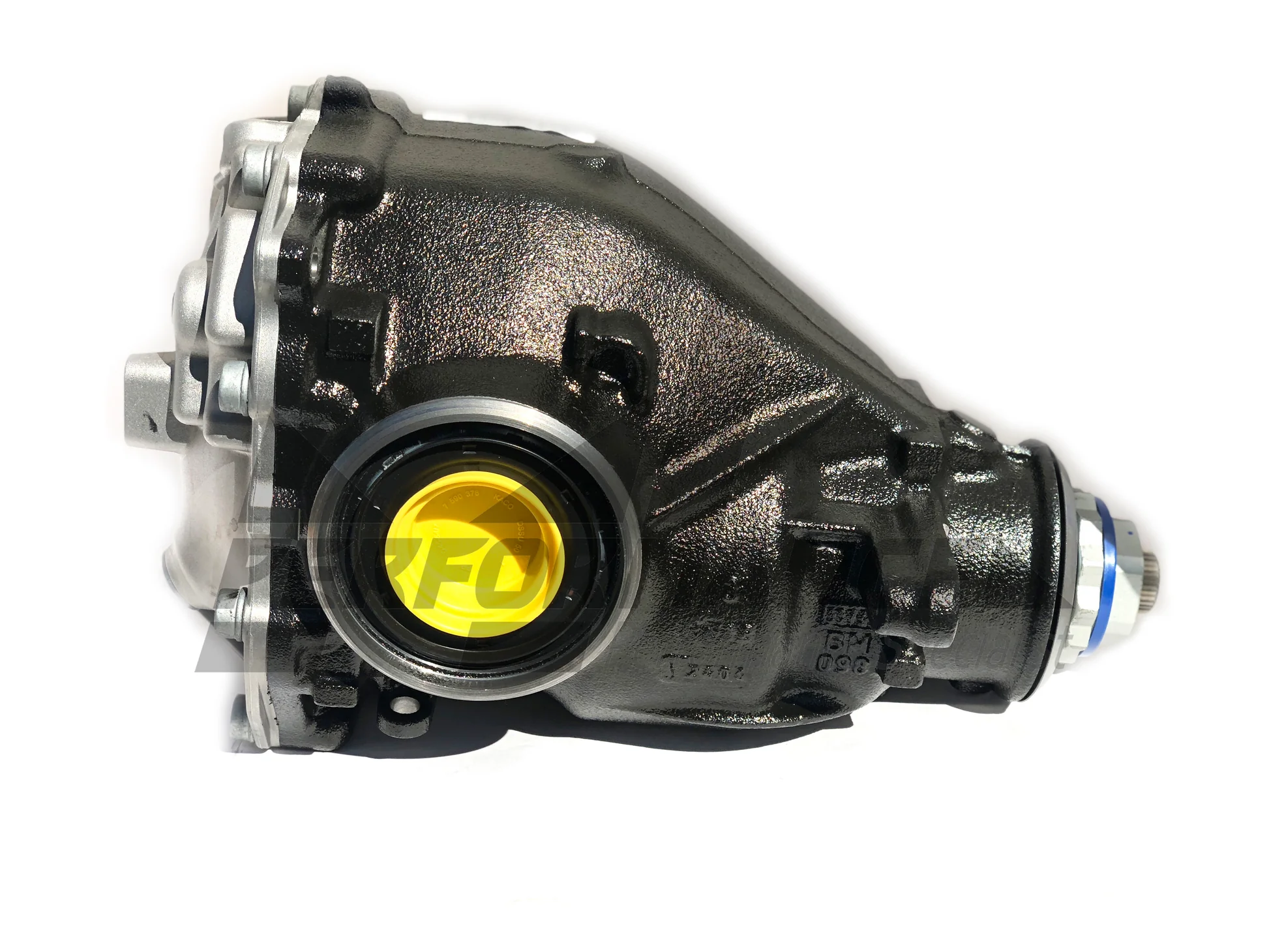
BMW officially recommends differential fluid changes every 30,000 miles under normal driving conditions. However, experienced M vehicle owners and specialized BMW service facilities frequently recommend fluid changes as often as every 15,000 miles or even more frequently for vehicles used in track events or driven aggressively.
Many owners report noticeable changes in differential performance (particularly increased chatter during low-speed turns) as the fluid degrades, serving as an early warning system for required service.
Fluid leakage issues further compound the M Differential’s reputation for excessive consumption. The combination of high operating temperatures and complex housing design with multiple sealing surfaces creates numerous potential leak points.
The differential’s venting system, designed to relieve pressure buildups during thermal cycling, sometimes allows fluid to escape during extreme use.
Many owners report discovering persistently damp areas around differential seams or vent caps, necessitating regular fluid top-offs between scheduled changes.
The financial implications of the M Differential’s thirst for fluid are substantial. The specialized fluid itself typically costs $40-60 per liter, with most differential services requiring 1.7-2.2 liters.
Adding the labor costs associated with proper fluid changes which often require special pumping equipment to ensure complete filling and proper bleeding results in maintenance expenses that can exceed $500 per service interval.
For owners who use their vehicles as intended by BMW’s M division (including occasional track use), differential fluid maintenance can easily become one of the highest recurring service costs over the vehicle’s lifetime.
While the BMW M Differential delivers extraordinary performance capabilities allowing precise power distribution that contributes to these vehicles’ legendary handling characteristics this performance comes with the significant trade-off of constant fluid monitoring and frequent replacement. This maintenance-intensive nature firmly establishes it among the automotive world’s thirstiest differential designs.
2. Ford Super Duty Sterling 10.5-inch Differential
The Ford Super Duty trucks equipped with the Sterling 10.5-inch differential present a fascinating paradox in the heavy-duty truck world: exceptional towing capacity paired with one of the most notoriously fluid-hungry differentials in modern vehicles.
Found primarily in F-250 and F-350 trucks from the late 1990s through mid-2000s, this robust differential has earned a reputation among owners and mechanics for its insatiable appetite for gear oil.
The Sterling 10.5’s fluid consumption issues stem primarily from its fundamental design philosophy. Created specifically for extreme duty applications, the differential features a massive 10.5-inch ring gear and substantial carrier assembly designed to handle the immense torque loads generated during heavy towing and hauling. However, this focus on strength came with compromises in sealing technology.
The differential utilizes conventional lip seals at critical junctions, particularly at the pinion shaft, which prove inadequate for maintaining fluid integrity under the thermal and pressure cycles experienced during heavy-duty operation.
Temperature management represents another critical factor in the Sterling’s fluid consumption problems. The differential housing, while robust, lacks sufficient cooling fins or thermal dissipation characteristics compared to the heat it generates.
During extended towing operations especially in mountainous terrain or summer conditions differential temperatures can exceed 250°F. At these temperatures, the differential fluid not only breaks down rapidly but also expands significantly, creating pressure that forces fluid past seals designed for more moderate operating conditions.
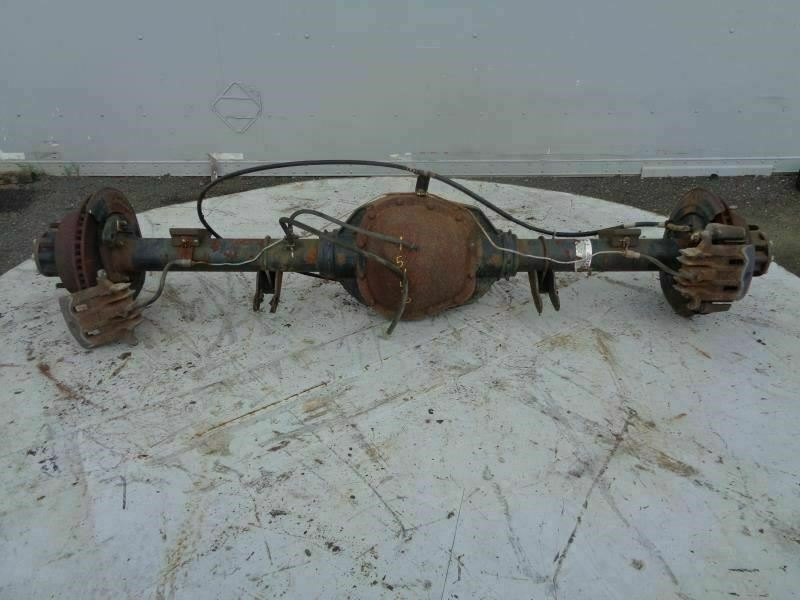
Ford’s official service recommendation calls for differential fluid changes every 30,000 miles under normal conditions, but specifies much shorter intervals of 15,000 miles for “severe duty” use a classification that ironically applies to precisely the type of work these trucks were designed to perform.
Experienced owners have developed a far more aggressive maintenance schedule, with many changing differential fluid as frequently as every 10,000 miles when regularly towing heavy loads.
This maintenance frequency represents one of the highest in the automotive world for a non-performance vehicle. Perhaps most telling about the Sterling differential’s fluid consumption are the aftermarket solutions developed specifically to address the problem.
Numerous companies offer enhanced differential covers with additional cooling fins, integrated temperature sensors, and even circulation ports for external coolers all aimed at reducing the extreme operating temperatures that accelerate fluid breakdown and leakage.
Similarly, specialized “extreme pressure” fluids with enhanced additive packages have gained popularity among Sterling 10.5 owners willing to pay premium prices for extended fluid life.
The financial impact of this maintenance requirement is substantial over the vehicle’s lifetime. Beyond the direct costs of premium synthetic gear oil (typically requiring over 3 quarts per service), labor expenses add up quickly as proper servicing requires careful cleaning of mounting surfaces and precise torque application to prevent further leakage issues.
For commercial operators using these trucks daily for heavy towing, differential maintenance can easily exceed $500-700 annually a significant operating expense for a component that ideally should require minimal attention.
While the Sterling 10.5-inch differential deserves recognition for its fundamental strength and durability, its excessive fluid consumption firmly establishes it as one of the automotive world’s thirstiest differentials, requiring vigilant monitoring and frequent servicing to maintain proper operation.
3. Jeep/Chrysler 8.25-inch Differential
The Jeep/Chrysler 8.25-inch differential presents one of the more frustrating paradoxes in automotive engineering a component with fundamentally sound design principles that is consistently undermined by manufacturing compromises and quality control issues, resulting in a differential with a notorious reputation for fluid consumption and leakage.
Found in numerous Jeep Cherokee, Grand Cherokee, Liberty models, and various Dodge trucks from the late 1980s through early 2000s, this differential has become infamous among owners for its constant fluid management demands.
At the core of the 8.25’s fluid consumption issues lies its problematic sealing system. Unlike higher-quality differentials that utilize precision-machined sealing surfaces and high-grade materials, the Chrysler 8.25 often left the factory with substandard seals and inconsistent machining tolerances.
The pinion seal a critical component preventing fluid leakage at the input shaft, frequently begins weeping fluid as early as 30,000 miles. Similarly, the axle seals where the halfshafts exit the differential case prove particularly prone to early failure, often allowing differential fluid to contaminate the vehicle’s brake components, creating both a maintenance and safety concern.
Housing design issues compound the differential’s fluid retention problems. The housing itself, while adequately strong for most applications, features casting quality that varies significantly between production runs.
This inconsistency creates microscopic porosity in some housings that can allow seepage even through the metal itself. More commonly, the cover gasket sealing surface often features subtle warping that prevents proper gasket compression, creating persistent slow leaks that require regular fluid monitoring and replenishment.
Temperature management further exacerbates the 8.25’s fluid appetite. The differential’s limited cooling fins and suboptimal housing design create heat retention issues during extended use.
In typical Jeep off-road applications precisely the conditions many of these vehicles regularly experience differential temperatures rise rapidly during technical driving, accelerating fluid breakdown and increasing pressure that forces fluid past already compromised seals.
The maintenance implications are substantial for owners. While Chrysler officially recommends differential fluid changes at 30,000-mile intervals, the reality of ownership typically involves much more frequent attention.
Experienced owners develop habits of checking differential fluid levels monthly, often finding themselves adding 4-8 ounces of fluid quarterly to compensate for slow leakage.
Complete fluid changes become necessary at roughly half the recommended interval (15,000 miles) for vehicles used even occasionally in off-road conditions.
Perhaps most telling about the 8.25’s reputation is the robust aftermarket that has developed specifically to address its fluid retention deficiencies.
Numerous companies offer upgraded differential covers with improved sealing technologies, enhanced gaskets made from premium materials, and aftermarket seal kits utilizing higher-grade components than the originals.
These products frequently advertise directly to frustrated owners’ experiences with statements like “Finally stop your Jeep’s differential leaks permanently!”
While the 8.25-inch differential does offer reasonable strength and adequate performance for most stock applications, its persistent fluid management demands create a significant ownership burden.
The component’s tendency to develop slow leaks from multiple points simultaneously often before reaching 50,000 miles firmly establishes it among the automotive world’s most maintenance-intensive differentials from a fluid consumption standpoint.
4. Range Rover/Land Rover LR-Series Differential
The differentials found in Range Rover and Land Rover LR-series vehicles (particularly those manufactured between 2002-2012) represent perhaps the perfect storm of differential fluid consumption problems.
These sophisticated units, while impressive in their capability, have earned a notorious reputation among owners and specialized mechanics for their insatiable thirst for differential fluid, creating a significant ongoing maintenance burden for these luxury SUVs.
At the core of these differentials’ fluid consumption issues lies their complex design architecture. Unlike more conventional units, the Land Rover differentials (especially in higher-trim models) incorporate sophisticated electronic limited-slip functionality and multi-plate clutch packs.
These clutch packs generate substantial heat during operation particularly during the off-road adventures that form a core part of the Range Rover’s brand identity.
This heat accelerates fluid breakdown at rates far exceeding conventional differentials, necessitating more frequent fluid changes to maintain proper operation.
Sealing technology represents another critical weakness in these units. The differentials employ numerous dynamic seals around rotating components, particularly at the output shafts and control actuators.
These seals face not only thermal stress from normal operation but also extraordinary environmental challenges given these vehicles’ amphibious capabilities.
Land Rover officially rates many models for water fording depths exceeding 20 inches, subjecting differential seals to significant pressure and potential contamination.
While the seals themselves are high-quality components, the extreme conditions they face result in accelerated deterioration and subsequent fluid leakage.
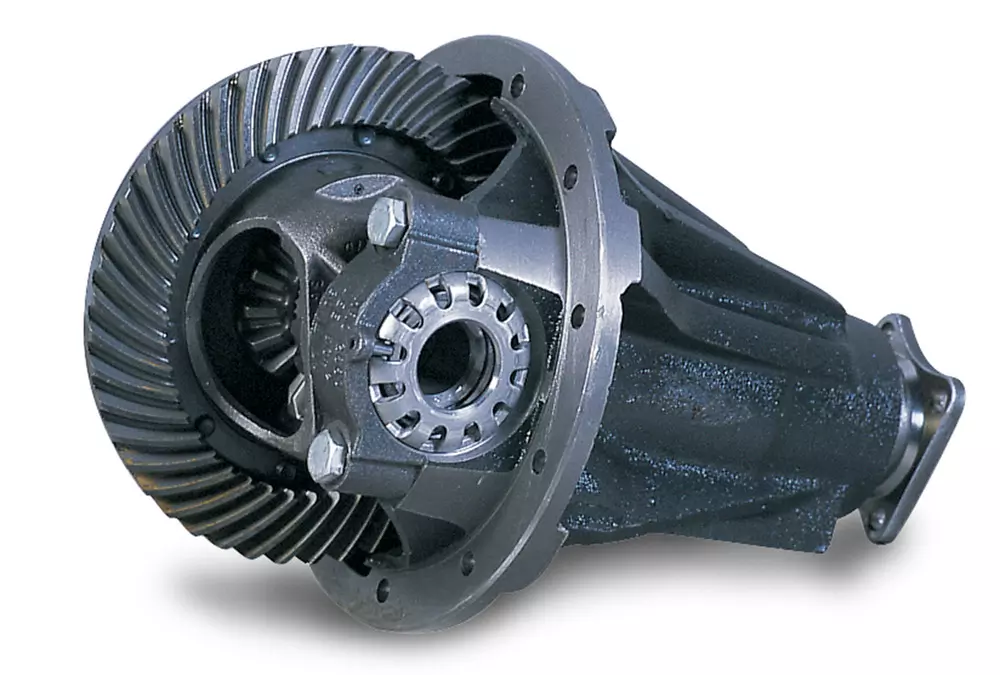
Manufacturing quality control issues further compound the fluid retention problems. During this production era, Land Rover experienced well-documented inconsistencies in component manufacturing and assembly.
These inconsistencies created subtle misalignments in differential housings and cover fitment, preventing optimal seal compression and creating leak paths that allow fluid to escape even under normal driving conditions.
Many owners report discovering damp spots beneath their vehicles within the first 30,000 miles of ownership an early warning sign of the ongoing fluid management these differentials require.
Land Rover’s official maintenance schedule recommends differential fluid changes every 30,000 miles under normal conditions, but experienced independent specialists often advise owners to perform these services at 15,000-mile intervals, particularly for vehicles used in demanding conditions or driven aggressively.
The specialized synthetic fluids required for these differentials typically cost $50-70 per liter, with complete services requiring 2-3 liters depending on the specific differential configuration, resulting in service costs frequently exceeding $500 when performed at dealerships.
Perhaps most telling about these differentials’ reputation for fluid consumption is the preventative maintenance approach adopted by knowledgeable owners.
Many establish personal maintenance protocols that include monthly differential fluid level checks and quarterly top-offs as part of routine ownership.
Various owner forums dedicate entire sections to tracking different sealing technologies and upgrade options, specifically addressing differential fluid retention problems a clear indicator of the widespread nature of these issues.
While Range Rover and Land Rover differentials deliver impressive capability, seamlessly transitioning from luxury highway cruising to genuine off-road performance this versatility comes with significant maintenance trade-offs.
The combination of complex design, challenging operating environments, and manufacturing inconsistencies firmly establishes these differentials among the automotive world’s most notoriously fluid-hungry components.
5. Nissan Titan Rear Differential (M226)
The Nissan Titan’s M226 rear differential represents a particularly frustrating case study in differential fluid consumption issues, especially in first-generation models produced between 2004-2015.
While the Titan was Nissan’s ambitious entry into the full-size truck market dominated by domestic manufacturers, its differential became a notable weak point, developing a reputation among owners and mechanics for excessive fluid consumption that often begins surprisingly early in the vehicle’s service life.
At the heart of the M226 differential’s fluid retention problems lies a fundamentally sound basic design undermined by specific engineering decisions and manufacturing quality issues.
The differential utilizes a robust 9.84-inch (226mm) ring gear with good load capacity, but Nissan’s implementation of sealing technology proved problematic.
The differential employs conventional lip seals at critical junctions, particularly at the pinion shaft, which prove inadequate for maintaining fluid integrity under thermal cycling.
These seals begin hardening prematurely due to the differential’s operating temperature profile, creating microscopic gaps that allow slow but persistent fluid seepage.
The differential cover design compounds fluid retention issues in the M226. Unlike competitors who typically use thicker gauge materials with precision machined sealing surfaces, the Titan’s differential cover features relatively thin material that proves susceptible to subtle warping during thermal cycling.
This warping creates uneven pressure distribution along the gasket, forming leak paths that allow fluid to escape even with properly torqued fasteners.
Many owners report discovering characteristic “weeping” along the differential cover seam within the first 60,000 miles often with the leak initially appearing so slow it doesn’t create visible drips, just a constantly damp appearance that collects road grime.
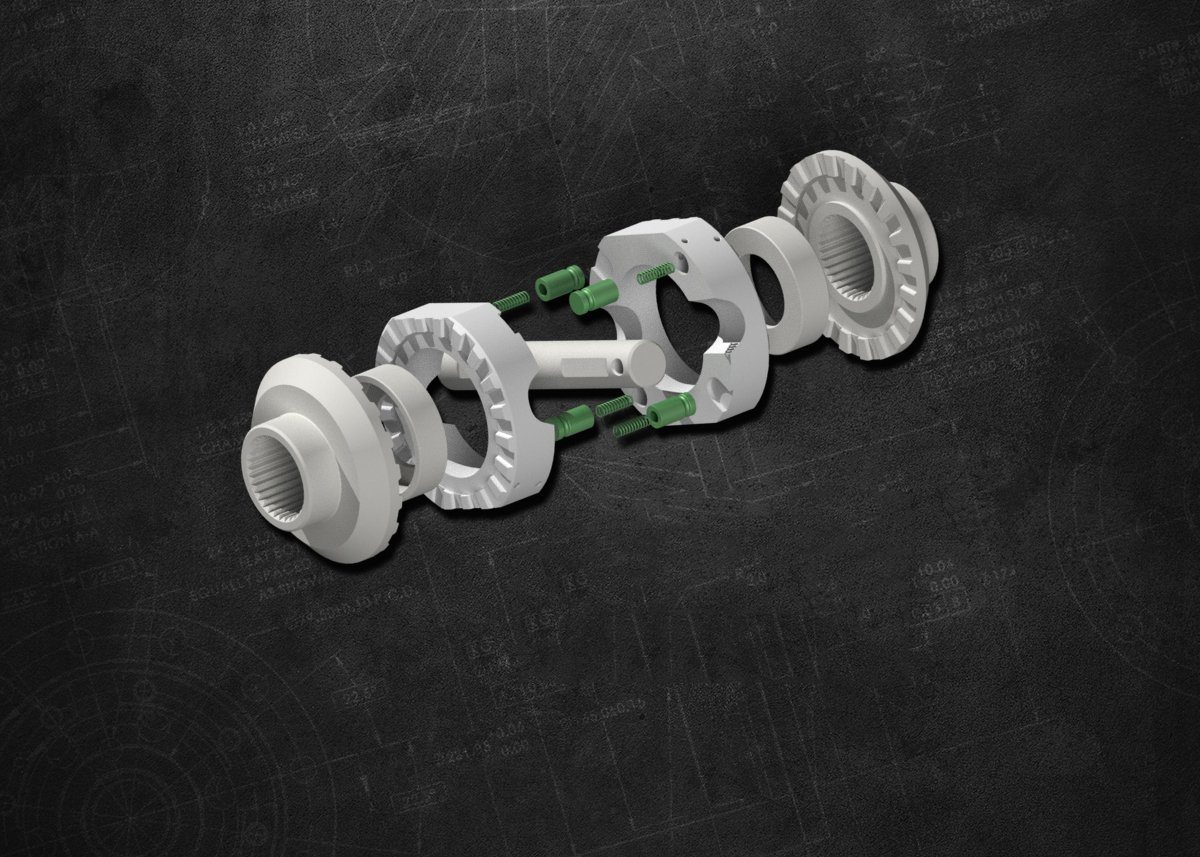
Breather system limitations further exacerbate the M226’s fluid management challenges. The differential’s breather valve, designed to relieve pressure during thermal expansion, sometimes allows fluid misting during extreme temperature changes or when the differential fluid becomes aerated during off-road use.
This creates a gradual, nearly imperceptible fluid loss that nonetheless requires regular monitoring and top-offs to maintain proper lubrication. The maintenance implications for owners are substantial.
While Nissan officially recommends differential fluid changes at 30,000-mile intervals for normal use (and 15,000 miles for “severe duty” that includes regular towing or off-road use), experienced Titan owners typically adopt much more vigilant approaches.
Many establish personal maintenance protocols including differential fluid level checks every 5,000 miles, often finding themselves needing to add 4-8 ounces quarterly to maintain proper levels. Complete fluid changes frequently become necessary at 10,000-15,000 mile intervals for trucks regularly used for towing a primary purpose for purchasing a full-size truck.
Perhaps most telling about the M226’s reputation is the robust aftermarket that has developed specifically to address its fluid retention issues.
Numerous companies offer upgraded differential covers made from thicker aluminum with enhanced sealing technologies, aftermarket breather systems with expanded capacity and better routing, and specialized “ultra-tacky” differential fluids formulated to better adhere to gears and resist being forced past compromised seals.
These products explicitly market to frustrated Titan owners with promises of “finally solving” their differential fluid loss problems. While the M226 differential does offer adequate strength for most stock Titan applications, its persistent fluid consumption issues create a significant ownership burden that contrasts sharply with Nissan’s usual reputation for reliability.
The component’s tendency to develop seepage from multiple points simultaneously firmly establishes it among the most maintenance-intensive differentials from a fluid management perspective.
Also Read: 5 Car Key Systems That Rarely Fail And 5 That Leave You Stranded

